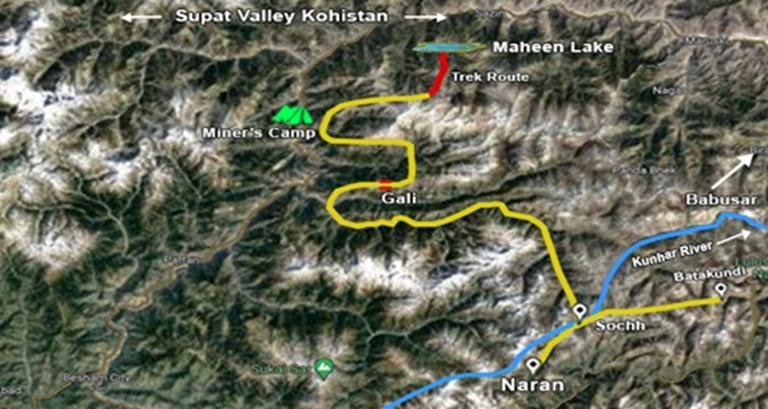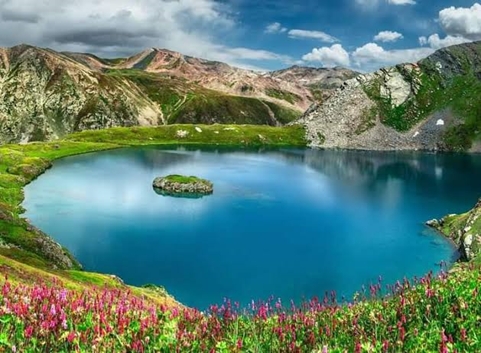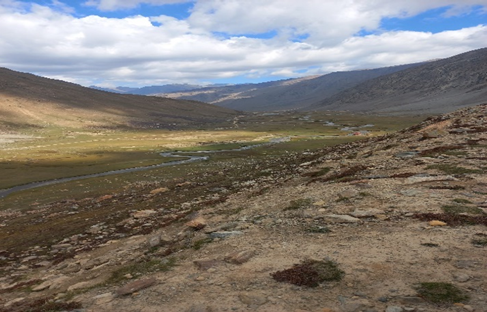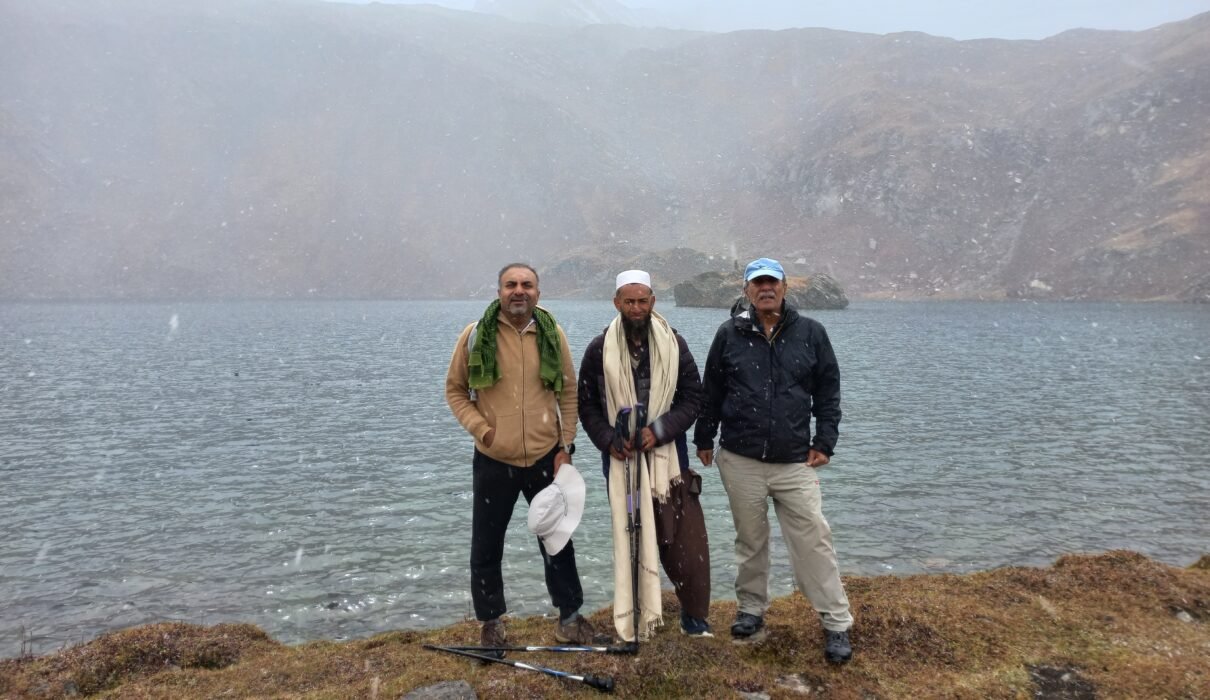Maheen Lake came up in a conversation with friends as a recommended venue for a trek. We got a window towards end of September 2022 and Maheen Lake figured out as a possible trekking venue. I contacted Nadeem (03490631609) who went with us a guide to Dudipatsar Lake in upper Naran Valley in 2021. He furnished the planning inputs and web search on treks to the picturesque Lake motivated us to go ahead.

The Lake is in the remote high altitude Supat Valley (mostly 10,000 feet ASL) in the Kohistan District of KP. It is approached from Naran, the upper Naran Valley and from Dassu (Kohistan). Suprat Valley is flanked by dry and jagged mountains, some reflecting early winter snowfall. A fordable water channel runs through it.

| Maheen Lake during Summers. Net picture |
It is sparsely populated with small hamlets of stone-built houses. Some are occupied during the summers. The locals engage in peridot mining which seems to be a major source of livelihoods and sheep farming is widely practiced. There is not much in terms of forestry due to the above-the-treeline high altitude configuration of most of the Valley.
Accounts indicate that Supat Valley housed variety of wildlife ranging from ibex to deer but mining related frequent blasting in their habitat seem to have scared them.
Granite and peridot mining is practiced in the adjoining regions of Mansehra. The jeepable track on which one goes to Maheen Lake was built to facilitate mining in the region.

| Supat Valley |
Myself and Asad left Islamabad on 30 September afternoon to reach Naran by the evening. We were picked up by Nadeem (03441424964), our guide, and the competent jeep driver Khalid (03458990204) from our hotel early in the morning on 30 October. From Sochh (5 km outside Naran on the Batakundi road) we started to ascend along a non-metaled track after crossing the Kunhar River. The climb got sharper, and we finally crossed the watershed along a narrow pass known as ‘Gali’ at about 13,500 feet, or at about 5,500 feet relative height difference from Naran. The watershed also indicates the inter-district boundary.
The track in Kohistan is narrower, stony with very sharp turns. It is advisable to travel with a good driver and in a mechanically sound jeep. We descended into the Suprat Valley and after 3 hours and forty-five minutes we reached the kick-off point for the trek to the Maheen Lake; at about 11500 feet. It was extremely cold, and the trekking end of the Valley got covered in dark clouds. A short trek in the Valley led to a climb along a gorge. I felt short of breath and the possible reason was inadequate high-altitude adaptation.
After entering the gorge, we started climbing a mountain on a sharp incline. We climbed onto its top and then trekked along a ridgeline to descend onto Maheen Lake in an hour and forty minutes. The Lake is set in a cradle like configuration in the mountains at an altitude of around 12,800 feet and it is one of the beautiful lakes that we have seen. It has a grassy bank from where we had approached with relatively dry rocks on the far side. A protruding rock sits in its middle on which someone had hoisted the national flag. We had climbed about 580 meters or nearly 2000 feet. A snowfall of increasing intensity prompted us to trek back.
There are two other lakes in the vicinity, we were told. One is known as the Fish Lake which requires another hour of climb. It has trout fish and there is another behind an adjoining mountain, again at an hour’s trek. Both are smaller in size compared to the Maheen Lake. It was not possible to visit them amid snowfall and freezing cold.

| Asad, Nadeem guide & Myself at the Lake (L to R) |
While returning we trekked back along a different route with a relatively easier descent. The jeep driver was keen on crossing the ‘Gali’ before it got covered in snow. We stopped briefly at a miner’s camp on the way back. We, however, got caught in heavy rain close to the Naran on a slippery patch one of the jeep’s tyres skidded into a pit. So, we abandoned the jeep and trekked till the Kunhar bridge where a backup jeep took us back to our hotel. So, bit of adventure on the way back. What do we conclude from the experience.
Approaching Maheen Lake entails a logistical exercise. One, it should be trekked ideally during the July-August period and preferably when it is not raining. The marginal track, particularly on the Kohistan side, requires skilful driving in a mechanically sound jeep. One must go self-sufficient in food as there are no roadside hotels available along the route. Fresh water can be accessed
The trek is not extensive, but it occurs over a higher altitude with less oxygen which causes tiredness and possibly nausea and vomiting. Therefore, it is recommended that one must camp close to the kick-off point overnight before trekking and adapt to the altitude by trekking in the Valley.
Finally, unlike most of our earlier treks we found no trash littered along the route or around the Lake. Credit goes to those who trekked and to the support staff. Maheen Lake is probably less frequented compared to some other trekking destinations and it, therefore, retains a certain pristine quality.
Summary:
| Access | Logistics | Trek | Safety | Cost | Aesthetics |
| Difficult. Four hours by jeep one way | To be pre-arranged | Moderately difficult | Guide is recommended. | Rs 13000 per participant. We were two. Jeep: Rs 16000 & guides: Rs 10000 | Very pleasing |


